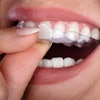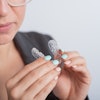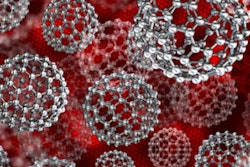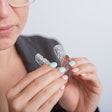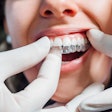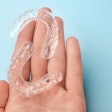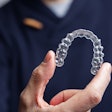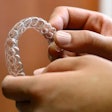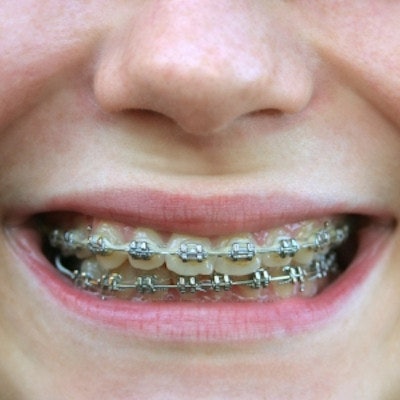
What if the invasiveness of orthodontic surgery could be supplanted by something kinder and gentler for patients with a severe malocclusion? Enter a novel developing technology that uses nanoparticles containing a deactivated form of collagenase to remodel oral tissue.
Periodontists, orthodontists, and chemical engineering researchers teamed up to develop a technique to implant nanoparticles in the gingival sulcus that were loaded with an enzyme that degrades connective tissue. This allowed for faster orthodontic tooth movement without surgery in an animal model (ACS Nano, February 27, 2018, Vol. 12:2, pp. 1482-1490).
"A new enzyme-based paste can shorten the time it takes to perform orthodontic procedures while improving the quality of life of the patients compared to current treatments," study co-author Avi Schroeder, PhD, told DrBicuspid.com in an email interview. "We are dreaming of an era in which surgical blades are replaced by enzymes that will affect only the target tissue without harming neighboring tissues."
Schroeder is an assistant professor of chemical engineering at Technion -- Israel Institute of Technology in Haifa.
Put down your knives
Some patients with severe malocclusion forego surgery due to its invasiveness, the study authors noted. The procedure can involve using a scalpel to section collagen fibers that connect teeth with alveolar bone to better allow braces to move teeth.
“We are dreaming of an era in which surgical blades are replaced by enzymes that will affect only the target tissue without harming neighboring tissues.”
"We thought that minimal oral surgeries can be conducted with a safer approach -- namely replacing blades with enzymes," Schroeder told DrBicuspid.com.
Collagen type I supracrestal fibers connect teeth and alveolar bone. Tooth movement during orthodontic procedures involves remodeling these fibers. The researchers sought to create a drug-delivery system that releases the proteolytic enzyme collagenase type I to relax a patient's collagen fibers to allow for more rapid tooth movement. Their goal was to develop a mode for performing biological, rather than physical, remodeling of connective tissue in the oral space.
Collagenase controls the biodegradation of collagen in the extracellular matrix and is active in tissue-remodeling processes. The investigators placed collagenase into 100-nanometer (nm) liposomes, which are nanoscale vesicles with an aqueous core encased in a lipid biolayer membrane that can deliver drugs. The system was designed so that collagenase begins diffusing from the liposomes only after placement in the sulcus.
The researchers studied the response of collagen fibers to collagenase at various concentrations in vivo in rats. They determined the therapeutic concentration at which fibers relaxed but did not tear. Overall, they observed a tightly packed fiber structure before treatment, which unraveled and later resumed its initial morphology except for some regions of regenerated fiber that were not perfectly aligned. They found that various collagen-repairing genes were activated.
Next, the researchers compared the efficacy of fitting the rats with braces under five conditions, three of which were controls:
- Enzymatic nanosurgery in which 50 microliters (µL) of collagenase-loaded liposomes were placed into the gingival sulcus on the buccal and lingual sides of the teeth
- Traditional surgery in which supracrestal collagen fibers were sectioned with a scalpel
- A control condition of empty liposomes
- A control condition of free collagenase
- A control condition of braces only
Orthodontic nickel-titanium, closed coil spring braces were used to connect the first molar in the upper pallet to the front upper incisors and glued to the tooth (3M). The rats were observed for 15 days with the braces and 45 days after removal. They underwent digital caliper measurement every three days while wearing the braces and micro-CT scans (SkyScan 1176, Bruker) on day 15 and day 60.
Improvement in tooth alignment over the 15-day period was similar in the traditional surgery and the nanoparticulate collagenase groups. Results were better in the nanoparticle group compared with the empty liposome group and the free enzyme group, with the nanoparticle group experiencing three times the tooth alignment enhancement of the ordinary braces group.
"The accelerated tooth movement in the nanosurgery group compared to that in the other treatment groups is attributed to the biological relaxation of the collagen fibers," the authors wrote.
The researchers also found that the liposomal system protected the enzyme in vivo, prolonging its release and focusing its delivery to the treatment site. Additionally, the nanoparticle group experienced minimal effects on eating, losing 10% of body weight like the other rats during the first week of treatment but being the only group to regain this weight subsequently.
Furthermore, micro-CT scans indicated that the nanoparticle group experienced faster and greater bone recovery compared with the ordinary braces group. Tooth relapse after brace removal was less in the nanoparticle group, which the authors attributed to tissue remodeling at the new orientation.
"We were happily surprised when we saw the rats recovered in a faster manner and with less pain involved," Schroeder wrote.
Not just for lab rats
While the authors listed no study limitations, this was an animal study.
Schroeder and his colleagues have previously performed many studies on the use of medicinal nanoparticles for medical but not specifically dental uses.
"The oral application is novel," he stated. "Therefore, we teamed up with orthodontists and periodontists who provided the clinical aspects."
Schroeder noted that he expects this technology to become available for use in humans in probably two to three years.
"We are working with regulatory bodies to produce these nanoparticles at clinical grade and believe this will happen rather soon," Schroeder wrote.
